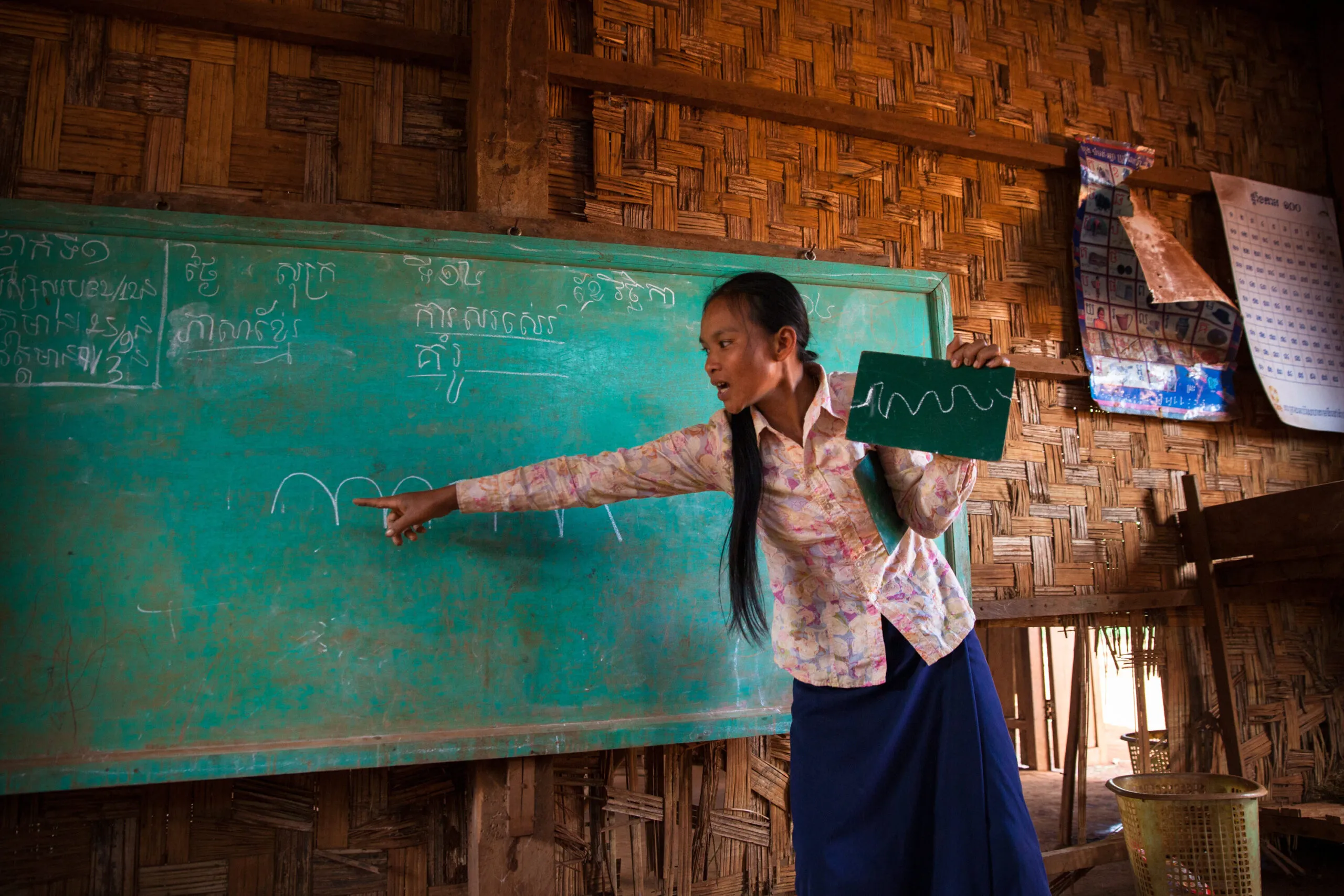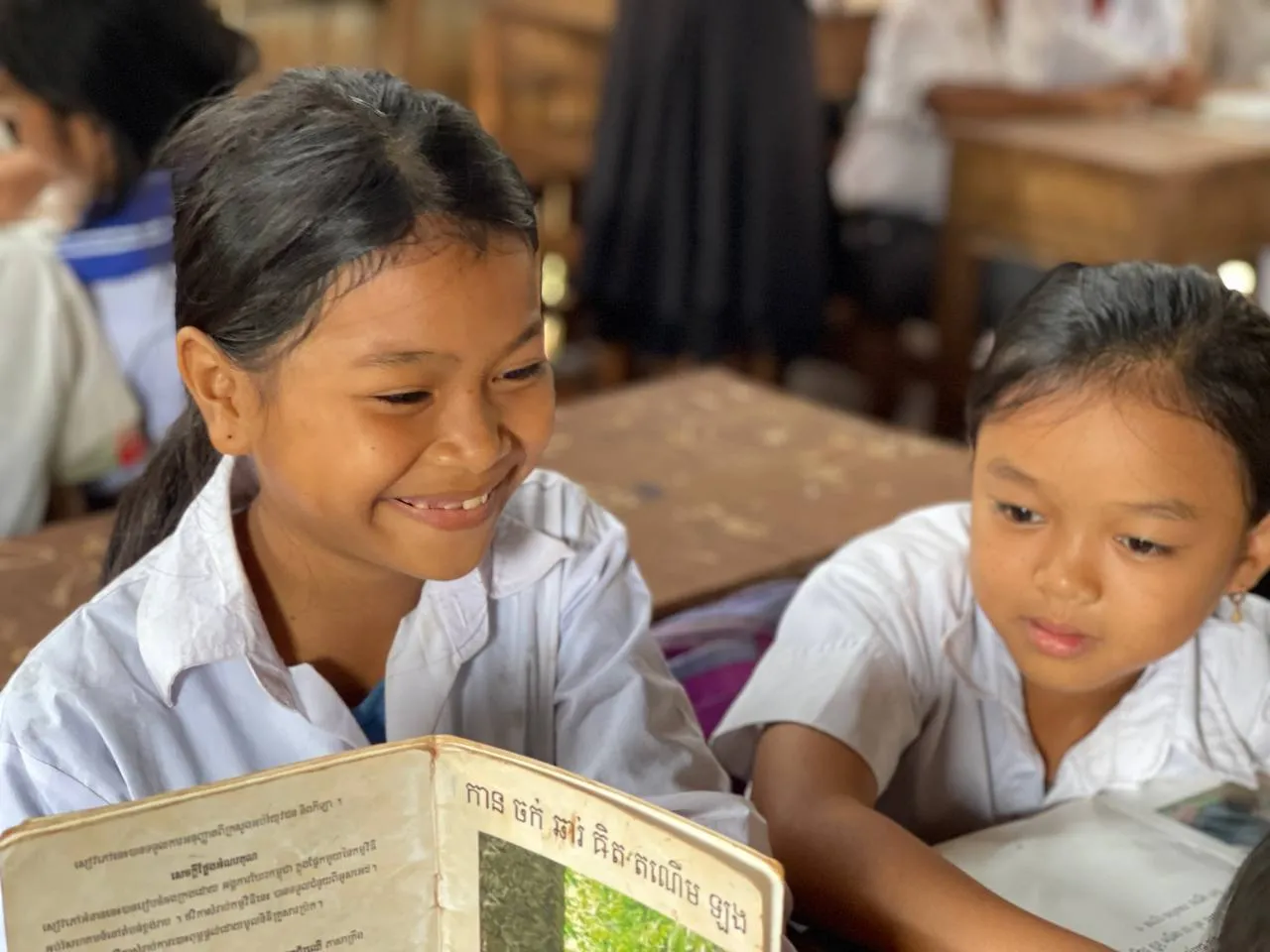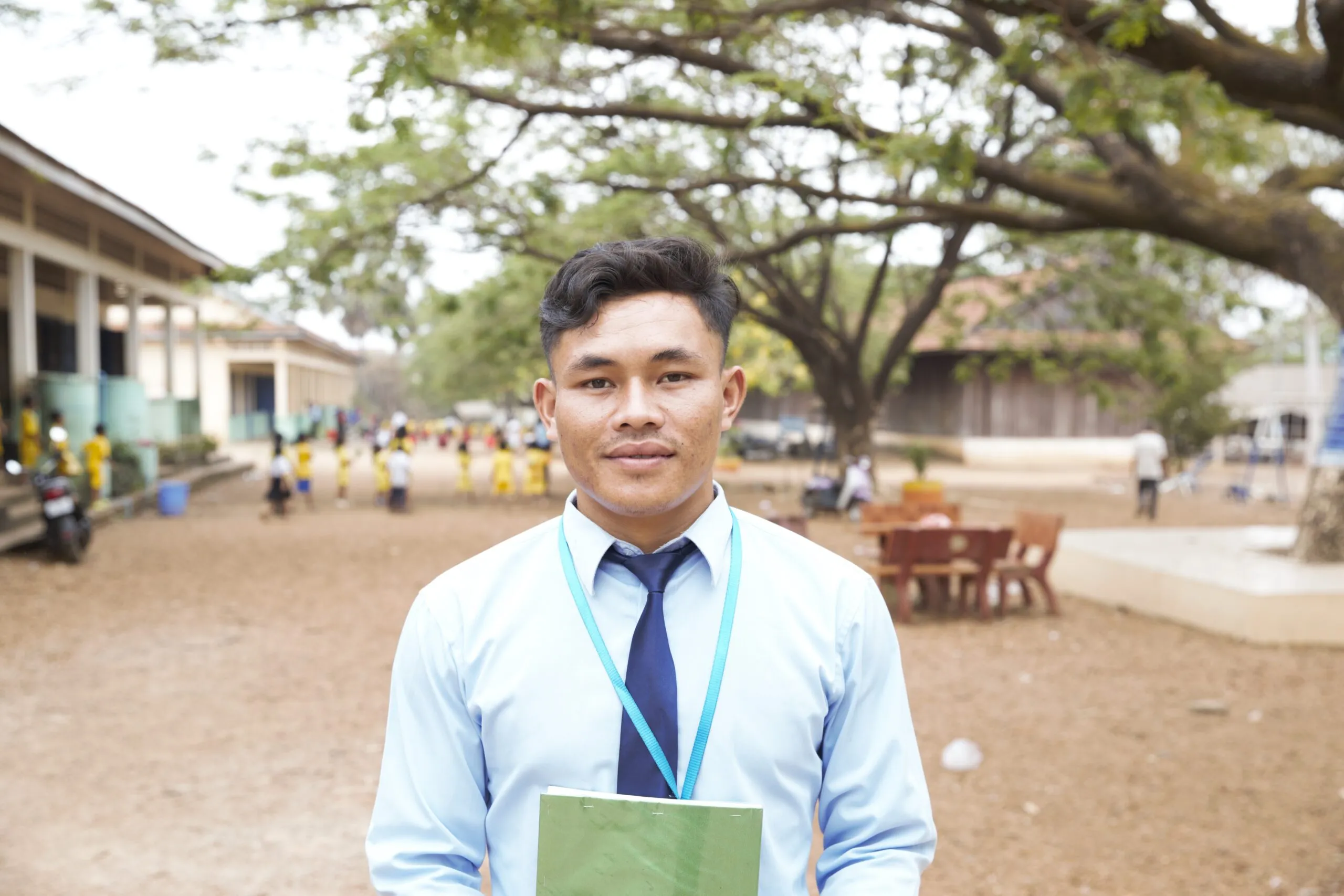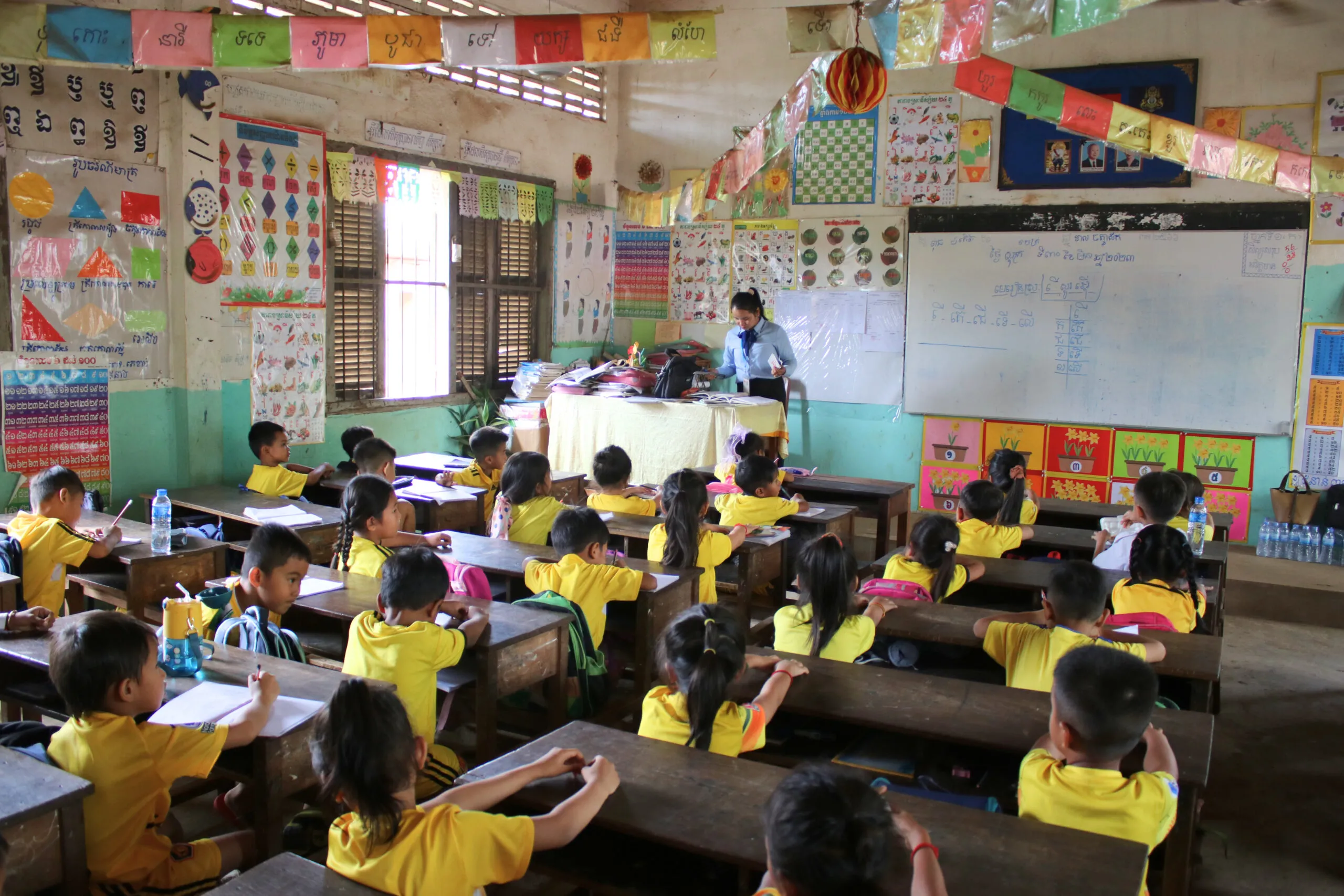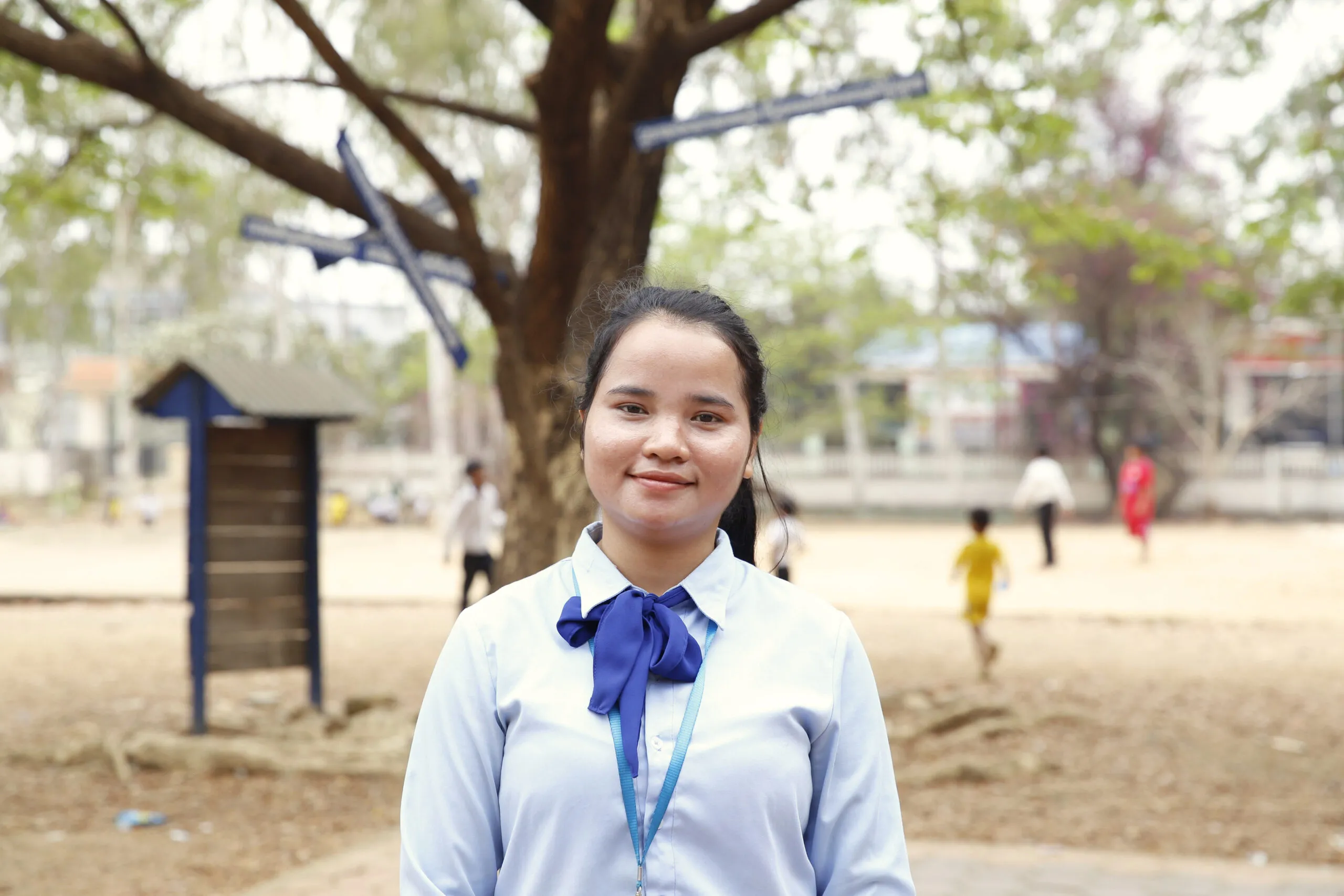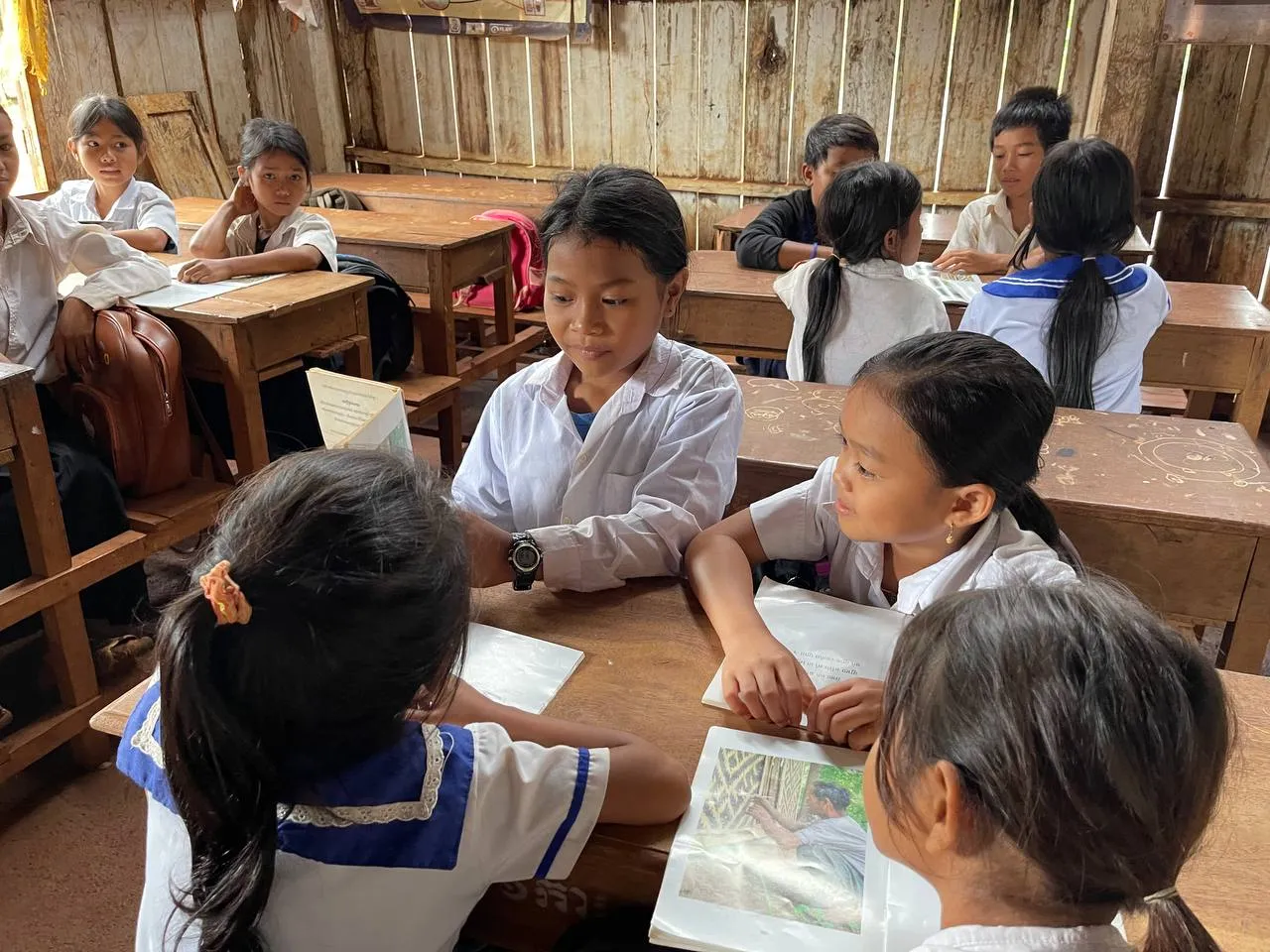“Kreung people have some special traditions and activities,” she says. “We do ceremonies like rice offerings, village offerings, special weddings, and Kreung New Year. When we have these events, everyone in my village plays traditional music like Gong, Chapey Klok, Tror, and wears traditional clothes.”
Cambodia is home to 24 minority language groups. For many young Indigenous people, these types of traditions have been relegated to their home and community lives but excluded from their official educations since they speak their own Indigenous languages, but many do not have good command over the national language, Khmer.
However, for Nang and many other Indigenous children who are taking part in programs like CARE’s Education and Work project, that’s changing.

